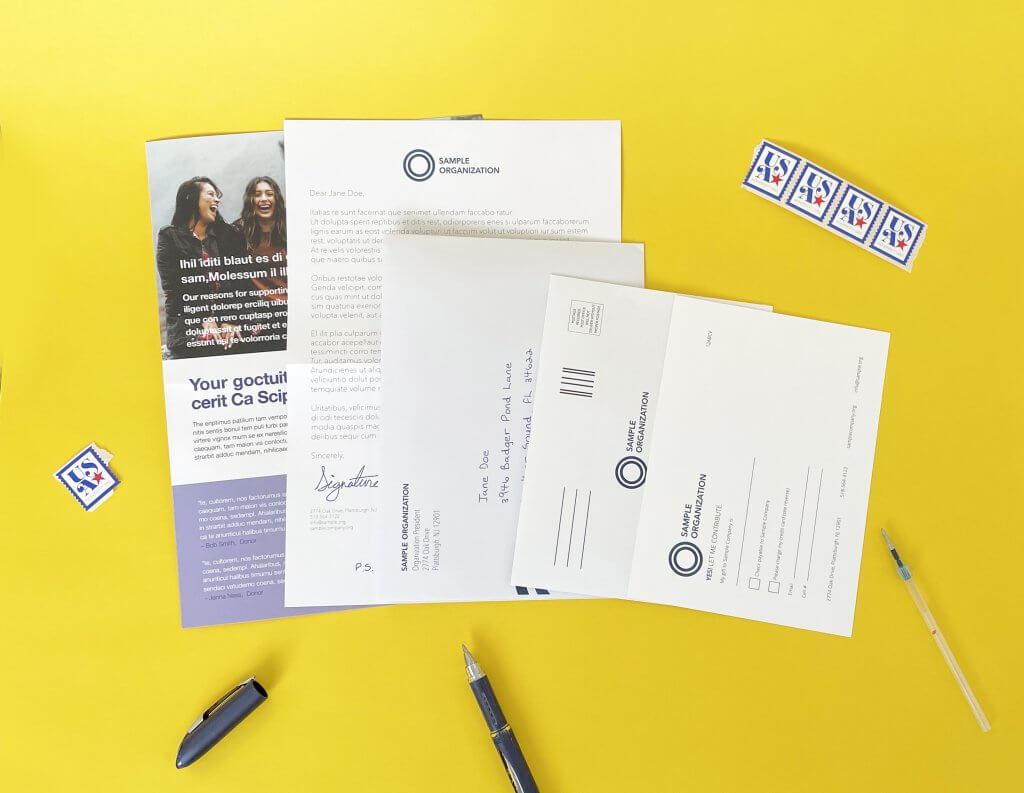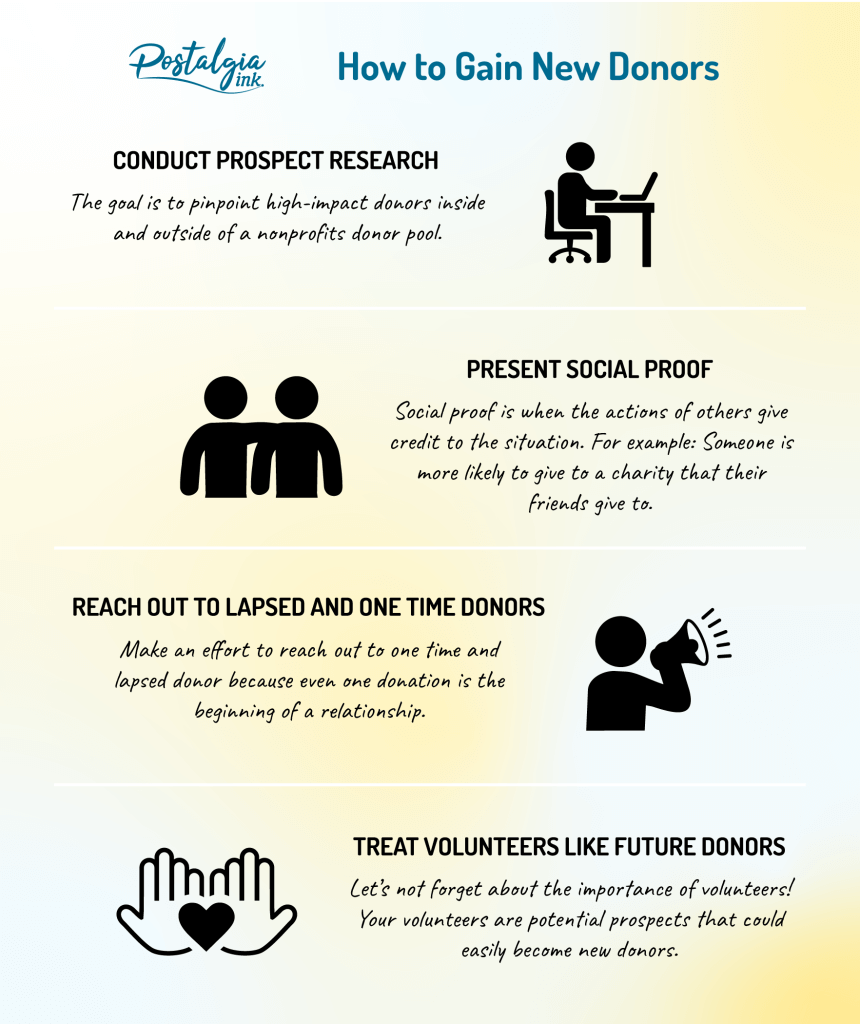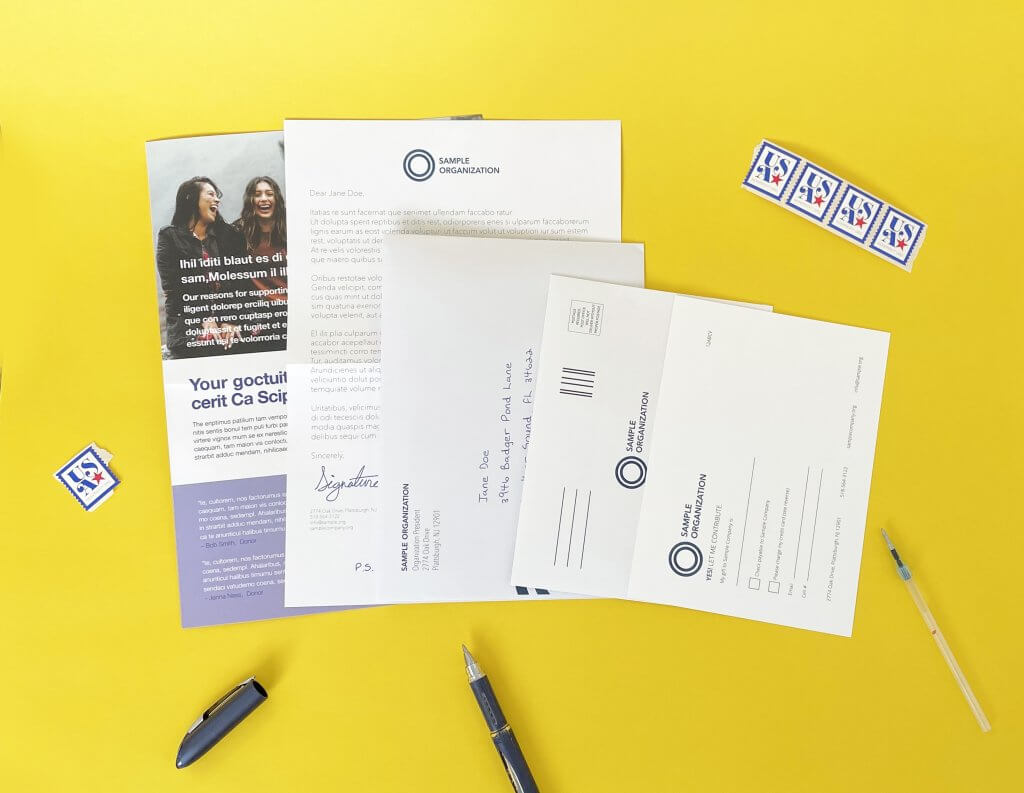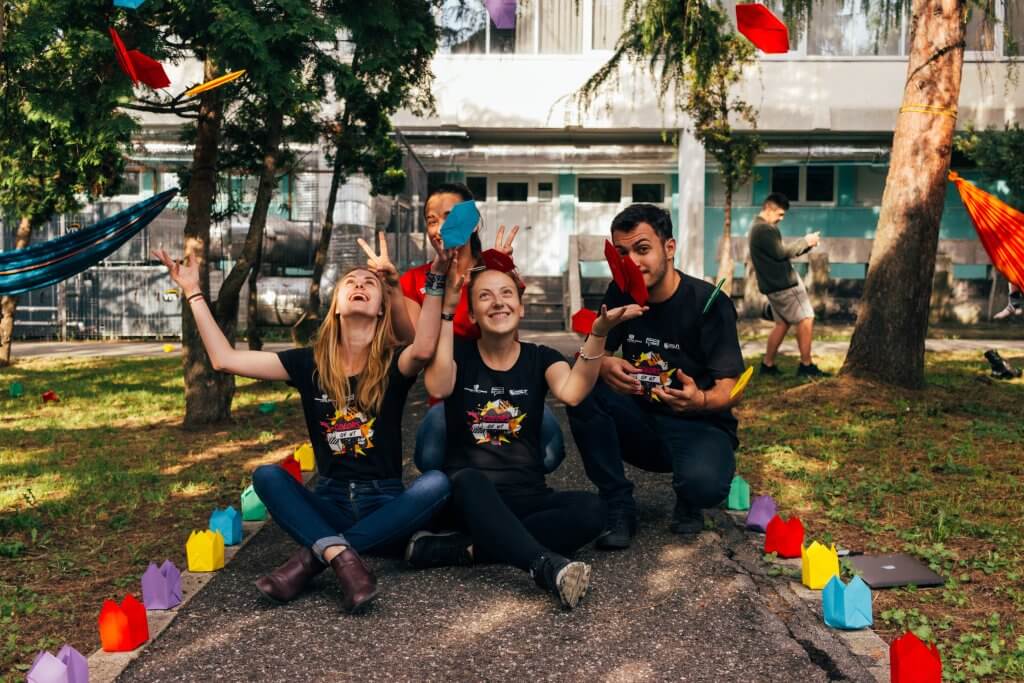INTRODUCTION
Lapsed donors should be a substantial focus for non profits in 2023. There have been troubling statistics that show that all retention rates are down. Organizations are losing donors and strong stewardship efforts are more important than ever. This article will provide some advice on how charities can reignite their relationship with lapsed donors.
According to the Fundraising Effectiveness Project (FEP), the Q3 2022 (JAN 1, 2022 – SEP 30, 2022) reports that all types of donor retention rates are down. New Donors -14.8%, Repeat Donors -5.4%, and Recapture Donors -15%.
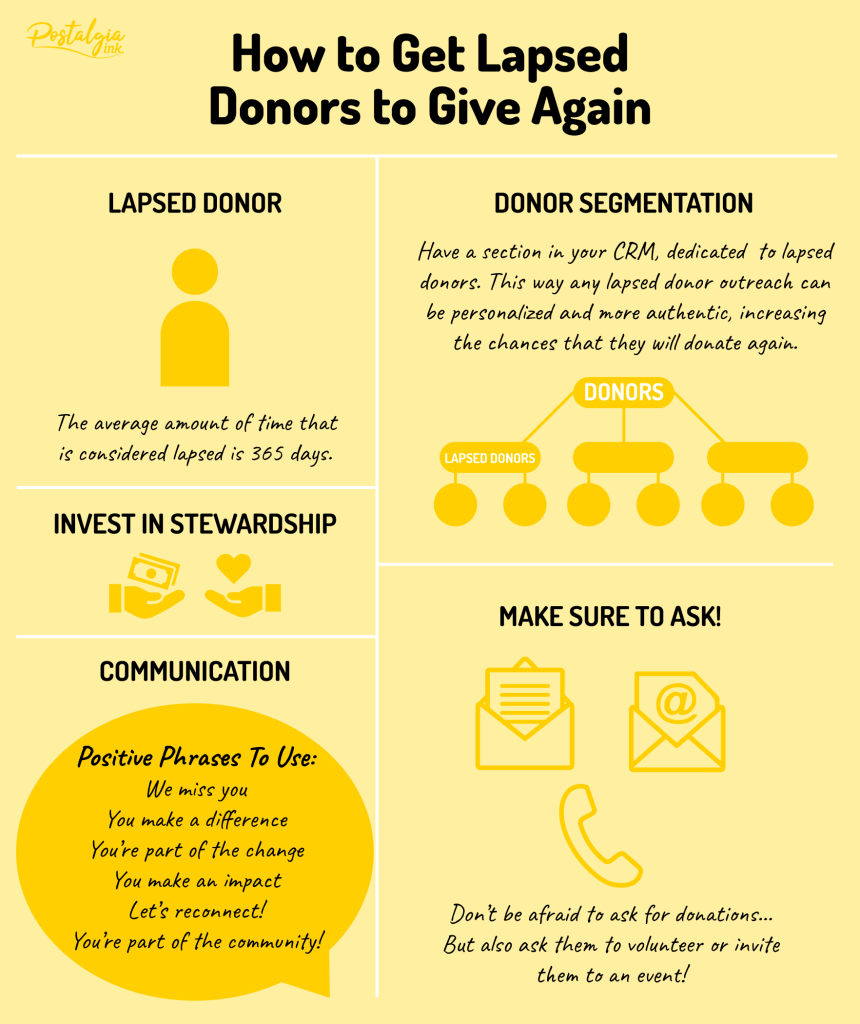
WHAT IS A LAPSED DONOR
A lapsed donor is someone who has donated to your organization in the past but has not donated again for a significant amount of time. The average amount of time that is considered lapsed is 365 days. A lapsed donor could be any type of donor: major, small, micro, and one time. There are many reasons why a donor becomes lapsed: a change in their giving limits, priorities change, they experience a lack of stewardship efforts, or they simply haven’t been asked for donations. The good news is that it is possible to have a lapsed donor give again! Furthermore, it is easier to reengage a lapsed donor than to find a new donor because you have already built a relationship with them.
We always recommend donor segmentation and making sure your donor data is stored and organized, so you should most definitely include a segmented list of lapsed donors. This way any lapsed donor outreach can be personalized and more authentic, increasing the chances that they will donate again.

FIND OUT WHY THEY BECAME LAPSED DONORS
Once you have established who your lapsed donors are, it is beneficial to determine why they became lapsed donors. There are a few ways to collect that information. You can send out a survey, invest in a deceased suppression process, and inspect the data from your CRM to determine patterns that could be the reason your donors became inactive.
COMMUNICATING WITH LAPSED DONORS
Stewardship is key, so always say thank you for any size gift. The type of language you use is important when you communicate with lapsed donors. Remember that inactive donors don’t think of themselves as inactive, they see themselves as having previously donated to the cause. That is a good thing though! Even if they only donated one time, take the opportunity to highlight that and use encouraging words. Make sure to stay away from language which might make them feel guilty and set a positive tone. One course of action you can take is to send out a “we miss you” message/letter.
Positive Phrases To Use:
We miss you
You make a difference
You’re part of the change
You make an impact
Let’s reconnect!
You’re part of the community!
Another course of action you can take is to send out a survey that identities when and how often you should communicate with them:
Once a year
4x a year
Once a month
By email only
By phone only
By direct mail only

INVEST IN STEWARDSHIP EFFORTS
Remember your donor retention skills! Maintain a personalized approach, and avoid cookie-cutter looking stewardship, handwritten letters are a way to do this. Use your donor segmentation lists and base your solicitation efforts on your inactive donors demographic.
Keep in mind that life changes, people move, change their names, change their phone numbers and even their email addresses. So make sure to do your best to keep their information up to date. Communicate with lapsed donors to check their information in your system and if possible, provide a way to update it.
As we mentioned earlier, if a lapsed donor only gave one time, they still have an affiliation with your organization. To nurture that relationship you can keep them up to date. Send them newsletters, impact reports, community testimonies, and success stories multiple times a year. It goes a long way to take the time and care to design readable, organized, and on brand pieces of literature.

DON’T BE AFRAID TO ASK!
With the use of all your stewardship efforts, it’s time to seal the deal and make an actual ask! Keep in mind, you are not limited to asking for just donations. You can entice them back into the community by inviting them to an event as a guest or even as a volunteer. Remember that one of the reasons a donor becomes inactive is because they don’t have the capacity to donate at that moment, but you can stay positive that they still want to be part of the organization. Remember to “TREAT YOUR VOLUNTEERS LIKE FUTURE DONORS”.
In 2023 there are a plethora of ways to get in touch with your lapsed donors, email, phone, text, and direct mail. To really invest in stewardship and maintain an authentic connection, personalized and handwritten campaigns show inactive donors you appreciate their support.
What to include in your stewardship efforts:
A Positive Phrase
Newsletter keeping them up to date
An ask (Donation or way to be involved)
Donation card & reply envelope
A QR card leading to your website and donation page
An address to send cheques or letters to
Phone number
Names of communication representatives
Lots of gratitude
WRAP IT UP
We had a discussion about turning your inactive donors to active once again. Once a donor becomes lapsed, there is still hope for their return because you already got over the hardest part which was their initial donation. In this article, we tackled what a lapsed donor is, how you can determine why they became inactive, communicating with lapsed donors, the importance of investing in stewardship, and how an ask can be more than just a donation, it can be asking to participate.
Want to level up your direct mail? Contact us.


